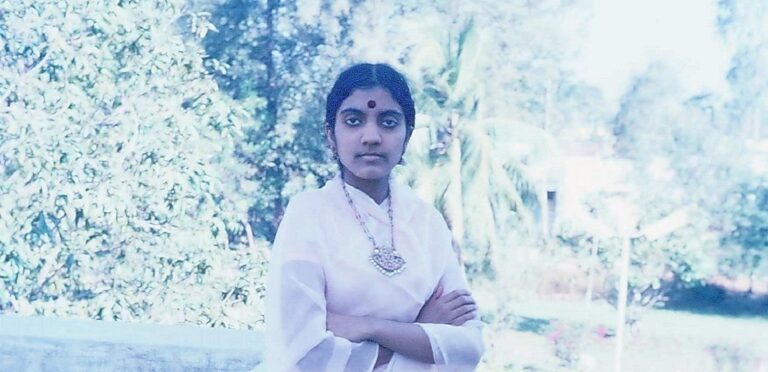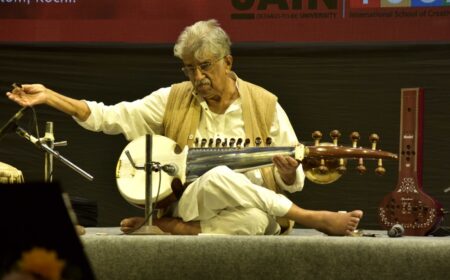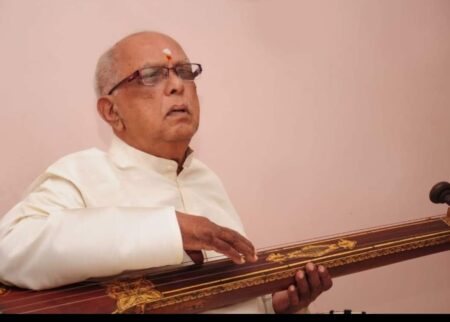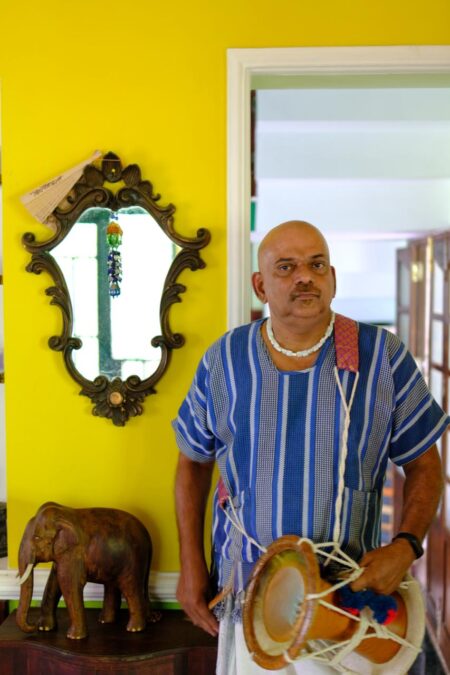With a penchant for slow and detailed vocals, Shobhana Rangachari (1954-85) was emerging heiress of the Tiger Varadachariar legacy when Carnatic lost her. A look at the lesser-known musician
MD Ramanathan’s music was rich for a wide range of reasons, yet the baritone played a decisive role in its appeal. So much so, a low-pitched voice is essential for a Carnatic exponent to remind the listener of MDR.
Shobhana Rangachari owned a throat that wasn’t deeply sonorous like, say, a D K Pattammal or Gangubai Hangal. Yet her art drew an unmistakable similarity with Ramanathan. Many called Shobhana (1954-85) Lady MDR.
If history marks MDR(1923-84) as a largely unsung hero during much of his life, the saga of Shobhana turned out to be even sadder. MDR, at least after his death, emerged from the shadows. Present-day musicians and buffs see him as an iconoclast, who was perhaps ahead of his times.
Shobhana definitely revealed the beauty of unhurried Carnatic. Like Ramanathan, she owes the contemplative style to Tiger Varadachariar, a 20th-century titan of the system. MDR was a frontline disciple of Varadachariar (1876-1950). For, Shobhana, though, Varadachariar was the teacher of her guru S Gopalakrishnan.
Gopalakrishnan was a musician with All India Radio in Delhi. In 1959, Shobhana’s family, too, moved into that metropolis from down the country. Else they hailed from the textile city of Erode, a good 400 km southwest of the Tamil Nadu capital of Madras (now Chennai).

Delhi stint
Shobhana’s father, K Jayachandran, became an officer at Indian Statistical Service, prompting the household to move to Delhi. Her mother, Kalyani Jayachandran, was a musician, having learned under Salem D Chellam Iyengar, who has a lineage tracing to Tyagaraja (1767-1847), the pre-eminent saint-composer. (The 1929-born Iyengar went on to become a professor at the Madras-based Kalakshetra, where MDR too was associated: as a student in 1944 and subsequently a teacher.) Shobhana’s paternal grandfather was self-taught vocalist-violinist N Krishnaswamy Iyengar.
Up in Delhi, Shobhana began learning Carnatic under a couple of gurus. She even won a local competition, and collected the first prize from the then president Dr S Radhakrishnan.
The next year, her father took the girl to Gopalakrishnan (who was working with AIR since 1945). The new mentor’s training lent a distinct quality to Shobhana’s music. For the first decade, though, the guru forbade her from singing in public. For months and years, she underwent strenuous re-learning coupled with practice.
Gopalakrishnan gave Shobana a solid grounding in the kritis of the trinity and others. The guru would carefully select pieces to introduce her to the nuances of ragas and rhythms. His north Indian stint had earned Gopalakrishnan (1918-2000) broad knowledge in Hindustani music too.
Just out of teens, in 1973, Shobana married. Her husband, C S Rangachari, was an IAS officer.
Come the next season, Shobana began performing in Madras. Particularly noticed were her concerts at Krishna Gana Sabha and Music Academy, reveals carnatic musician Ranjani Sivakumar, quoting the Rangachari family in Bangalore. Shobana’s music explored the scope of the lower mandrasthayi registers and ornamentations in vilambakala leisure. Soon, her concerts gained a unique style.
Steady rise
In 1976, Shobhana became an A-grade artiste in AIR. Coimbatore, Hyderabad Mumbai and Delhi provided her platforms. Her explorations in the ragam-tanam-pallavi format followed unconventional phrases and structures. Shobana believed in challenging herself so as to cross her limits. She experimented with ideas absent in the system, according to old-timers.
Shobhana’s seldom played to the gallery. Neither was she a crowd-puller. She was valued by a small group of discerning listeners, who would follow her concerts passionately.
“Her manodharmam was excellent. She never copied anyone,” says septuagenarian musician Seetha Narayanan, throwing light on Shobhana’s free spirit. “For instance, her alapana of Begada won’t necessarily start from a lower range to systematically progress. She’d directly begin from the top.”
Like her main guru, Shobhana had a sense of Hindustani music. She even learned under thumri exponent Siddheswari Devi (1908-77) of Banaras gharana. This helped her absorb the finer points of voice modulation. At a later stage, Shobhana became interested in western music and started to take piano lessons for better appreciation, reveals Ranjani, currently training under vocalist Pantula Rama.
Shobhana, who nurtured her talent through sustained training, had a good grounding in shruti (pitch) and laya. According to scholar KS Mahadevan, her singing was more of a self-enquiry. “Her concerts were far away from the usual rut,” he says. “She would take off with the Thodi varnam ‘Kanakangi’. Of Pallavi Gopala Iyer, in (the 14-beat) ata tala cycle.”
Shobhana, a mother of two, met with an unexpected end in 1985 owing to a mishap. The tragedy left her followers unhappy. Musician Desamangalam Narayanan of Kerala recalls the only Shobhana concert he attended four decades ago. “It was such a powerful experience. I will never forget it,” says the vocalist, who teaches at Chetana Music Academy in Thrissur, Kerala.
What Narayanan heard was among the 100-odd kacheris Shobhana gave in her life. A relatively small number from a musician of immense potential.





1 Comment
somehow youtube gave me a concert of Shobhana’s and ended up here. Beatiful singing, sad that such a great artiste didn’t live full life.